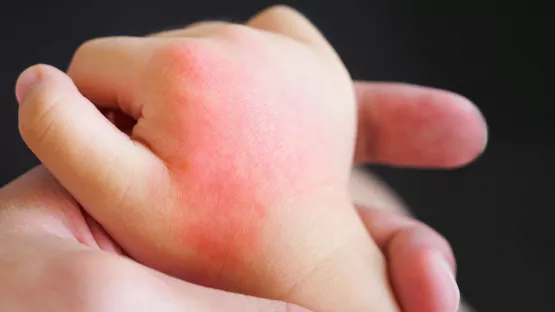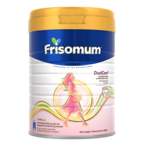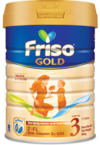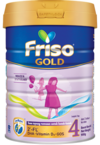Sleeping Tips for Your One-Year-Old Child
As your child gets more aware of their surroundings, they may start to.... read more

Heat rash—also known as prickly heat or miliaria—is a skin condition that develops when your child’s skin gets too hot. Heat rash is caused when sweat glands get blocked, and the sweat gets stuck in your child’s pores. When your child’s body becomes hot, the sweat glands in their skin begin to produce sweat to cool down. Normally, drops of sweat would be released through openings known as sweat ducts. However, children have tiny pores that can easily become clogged. This is how heat rash occurs — it is the result of sweat getting caught in those small pores as it tries to reach the skin's surface.
According to Mayo Clinic, heat rashes come in three forms, namely miliaria crystallina, miliaria rubra, and miliaria profunda.
This form of heat rash happens when the opening of the sweat pore is blocked. It manifests on the skin as fluid-filled bumps that are tiny yet clear. They are usually around 1-2mm in size, and can be mistaken for beads of sweat. One prevalent characteristic of miliaria crystallina is how easy it can break.
Often described as a heat rash that occurs deeper in the skin, miliaria rubra is the most common form among heat rashes. You can easily identify it as it appears like inflamed bumps that are occasionally filled with pus. They are usually around 2-4mm in size, and often appear in areas of friction with clothing.
The least common form of heat rash is also the most painful type as it affects the deepest layer of the skin. This heat rash comes in the form of itchy inflamed bumps that may break open. It also possesses the colour of the flesh and is usually 1-3mm in size.
Heat rashes are caused by the things we do every day, and this includes
While they do sound inevitable, they can be prevented with proper hygiene practices. But if it does affect you or your loved ones, you should be happy to know that there are indeed natural treatments for heat rash.
Children have soft and delicate skin. This means that their skin is more sensitive and prone to rashes. The symptoms of heat rash include:
If your child has experienced these telltale signs, they might have a heat rash. Keep an eye on your child’s chest, neck, diaper area or armpits. Your child is more likely to develop heat rash in these spots of their body because these are the areas of the body that usually produce the most sweat. Clothing also tends to fit tightly around those parts of their body.
No worries, mums and dads! Heat rash is easy to treat and it normally goes away in two to three days, if not sooner. Here are some of the best ways to treat your child’s heat rash.
It is extremely important to keep the areas affected by heat rash completely dry. As mentioned before, heat rash is caused by clogged sweat in your child’s pores, so keeping your child’s skin dry and letting it breathe is one of the most natural treatments for heat rash. Let your child be naked, or just in a diaper at room temperature (or cooler) as much as possible until the rash goes away.
Another way to help your child's skin breathe is by using clothing that helps remove sweat and moisture from the surface of their skin. This also helps alleviate the symptoms and aids with sweat evaporation, giving your child some comfort.
Whenever you are wondering how to treat heat rash naturally, you should always look for mild cleansers. A lot of soaps are too harsh for a child’s delicate skin, so avoid them as much as possible. Instead, use mild cleansers to bathe your child. This home remedy is a great way to treat heat rash and will keep your child’s skin healthy. You can also use baking soda, calamine lotion or aloe vera gel to soothe irritated skin. Sandalwood powder is another terrific way to help with itchiness!
Always be gentle with your child’s skin. Be careful not to rub or scratch your child’s skin when dressing them. You can even let your child air-dry after a bath to cool off if you have the time. If you’re not a fan of air-drying after bathtime, you can pat your child dry with a soft towel and only use gentle skincare products that are specially designed for a child’s delicate skin.
It could be possible that your child is dehydrated when they experience a heat rash. There could be a lot of moisture produced by sweat glands that get locked in their skin and the rash. Your child’s body is working very hard to unclog their pores to make the rash go away. Give your child plenty of fluids so that their body has the hydration it needs until the heat rash is gone.
Try Friso® Gold Step 3 and Friso® Gold Step 4. Made with milk and processed only once with LocNutri™ Technology to preserve more than 90% of nutrients, Friso® Gold combines the magical goodness of nature with science to bring you easy to digest milk with more than 50 essential6 nutrients to help your child grow stronger from the inside. Friso® Gold now with NOVAS™ Signature Milk with naturally small molecules and soft structure, has no added sucrose or flavour for easy digestion so your child can be stronger inside. It is incredibly important for your child to have good digestion not only for their comfort but to also avoid complications in their future. You may request a sample: Try free 1-day trial pack or 50% off for 6 days-trial pack.
Friso® Gold 3 is for toddlers which are children between the ages 1 to 3 years old with Easy to Digest nutrients so they can be strong inside to experience life at its best and fullest with you.
DHA, AA, Omega 3&6 - To fuel learning growth. DHA is important for optimal visual and cognitive development1. AA is recognised for its key role for optimal health, cognition and development during foetal life2. Omega 3 and 6 fatty acids are important for normal development of the brain, nervous system, sensory organs and intelligence3.
Calcium, Protein, Vitamin & Minerals - Muscle and bone growth. Calcium helps in the normal growth and development of bones and teeth. Protein is essential for your child’s growth, maintenance and repair for the body4. Vitamins and minerals are vital for growth and metabolism5.
GOS, Nucleotides & Bifido Lactis - Helps absorb key nutrients & build strong immune systems. GOS are prebiotics that can help with constipation and more6. Nucleotides can promote healthy gastrointestinal and immunological growth in young children7. Bifido Lactis is important for diarrhoea prevention as well as immune and gut maturation8.
Friso® Gold 4 is made for children above the age of 3 and contains the right choice of nutrition support through its milk powder which are:
DHA, AA, Omega 3&6 - To fuel learning growth. DHA is important for optimal visual and cognitive development1. AA is recognised for its key role for optimal health, cognition and development during foetal life2. Omega 3 and 6 fatty acids are important for normal development of the brain, nervous system, sensory organs and intelligence3.
Calcium, Protein, Iron, Copper, Vitamin A and K1 - These nutrients give rapid growth of muscle and bone, as well as healthy vision to prepare the body for study as children of 4 years old begin their preschool education. Calcium helps in the normal growth and development of bones and teeth. Protein is essential for your child’s growth, maintenance and repair for the body4. When copper is combined with iron, it allows the body to build red blood cells as well as maintain healthy bones, blood vessels, nerves, and immune system9. Vitamin A enhances vision and immune functions10. Vitamin K1 helps make other proteins in the body that are important for blood, bone and kidney health and can be found in dark, leafy green vegetables11.
GOS, Nucleotides & Bifido Lactis - Helps absorb key nutrients & build strong immune systems. GOS are prebiotics that can help with constipation and more6. Nucleotides can promote healthy gastrointestinal and immunological growth in young children7. Bifido Lactis is important for diarrhoea prevention as well as immune and gut maturation8.
In conclusion, heat rash/prickly heat is not a serious problem. More often than not, it resolves on its own, especially if you practise the simple and natural treatments and home remedies we’ve shared with you. Heat rash is never fun, but as mentioned, it is very common and easily treatable. Keeping your child cool and dry is a great way to prevent heat rash. But it goes without saying that if you want more health information, or if your child starts experiencing more severe symptoms like fever, chills, or increased pain, you should seek out a doctor for professional medical assistance.
View more toddler guides here.
References:


